Phylum Chordata
This is the third most populous phylum in the animal kingdom. The existence of a notochord, a dorsal hollow nerve cord, a post-anal tail, and paired pharyngeal gill slits distinguishes animals belonging to the phylum Chordata. These are bilaterally symmetrical, triploblastic, coelomates that are organized at the organ-system level. Their circulatory system is closed. The Chordata phylum is subdivided into three subphyla:
The Chordata phylum is subdivided into three subphyla:
(a) Urochordata or Tunicata: Examples: Ascidia, Salpa, and Doliolum;
(b) Cephalochordata: Example: Branchiostoma; Amphioxus or Lancelet
(c)Vertebrata: Example: Horse, Humans
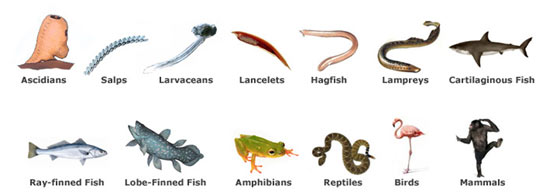
Subphyla Urochordata and Cephalochordata are collectively referred to as protochordate andare only found in the ocean. The notochord is only present in the larval tail of Urochordata, but it extends from the head to the tail area of Cephalochordata and is present throughout their lives.During the embryonic period, members of the Vertebrata subphylum have a notochord. In adulthood, the notochord is replaced by a cartilaginous or bony vertebral column. All chordates are vertebrates, however, not all chordates are vertebrates. Vertebrates have a ventral muscular heart with two, three, or four chambers, kidneys for excretion and osmoregulation, and paired appendages that can be fins or limbs.
The subphylum Vertebrata is further divided as shown below:
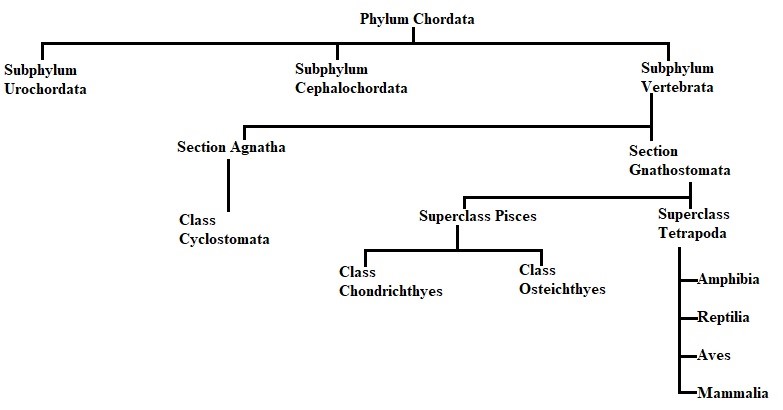
Agnatha comprises jawless organisms which consist of only one subdivision, Cyclostomata. Gnathostomata comprises animals having jaws and can be further divided into fin-bearing Pisces and limb-bearing Tetrapods.
A. Class Cyclostomata: Cyclostomata comprises loving members of the class who are ectoparasiteson some fishes. For respiration, they have an extended body with 6-15 pairs of gill slits. Cyclostomes have a circular sucking mouth with no jaws. Scales are missing from their bodies, and they have paired fins. The cranium and spinal column are made of cartilage. The circulation is closed. Cyclostomes are marine creatures that travel to freshwater to procreate. They die within a few days of spawning. After metamorphosis, their larvae return to the sea. Petromyzon (Lamprey) and Myxine (Hagfish) are two examples.
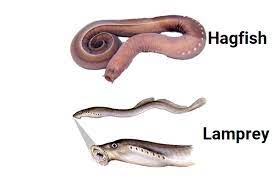
B. Class Chondrichthyes: They are streamlined aquatic organisms with a cartilaginous endoskeleton. The mouth is situated ventrally. The notochord remains throughout life. Gill slits are distinct and lack an operculum (gill cover). The skin is robust and covered in little placoid scales. Teeth are modified placoid scales that point backward. Their jaws are extremely strong. These creatures are predators. They must swim frequently to prevent sinking due to the lack of an air bladder. It has two chambers (one auricle and one ventricle). Some have electric organs (such as Torpedo) and others have poison stings (e.g., Trygon). They are cold-blooded (poikilothermous) animals, meaning they can't control their body temperature. Sexes are distinct. Males have claspers on their pelvic fins.Internal fertilization is present, and many of them are viviparous. Scoliodon(dogfish), Pristis (sawfish), Carcharodon (great white shark), and Trygon(Stingray)are among examples.
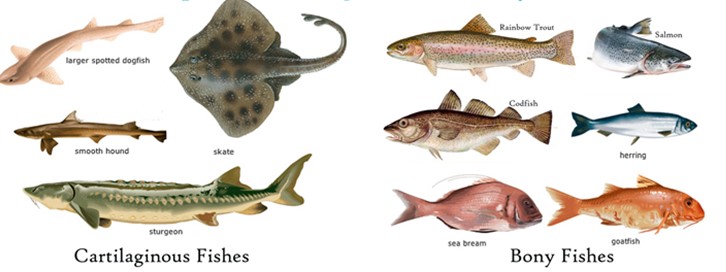
C.Class Osteichthyes: With a bony endoskeleton, it contains both marine and freshwater fish. Their physique is slim. The mouth is primarily terminal. They have four pairs of gills on each side, which are covered by an operculum. Cycloid/ctenoid scales cover the skin. The presence of an air bladder influences buoyancy. A two-chambered heart (one auricle and one ventricle). They're cold-blooded creatures. Sexes are distinct. External fertilization is common. They are generally oviparous and have a straight development. Examples includeFreshwater – Labeo (Rohu), Catla (Katla), Clarias (Magur); Marine – Exocoetus (Flying fish), Hippocampus (Sea horse); Aquarium – Betta (Fighting fish), Pterophyllum(Angelfish).
D. Class Amphibia: Amphibians can survive in both aquatic and terrestrial environments. They all have two sets of limbs. The body is divided into two parts: head and trunk. Some individuals may have a tail. The skin of amphibians is wet (without scales). Eyelids cover the eyes. The ear is represented by a tympanum. The alimentary canal, urinary system, and reproductive tract all open into a single chamber called the cloaca, which is visible from the outside. Gills, lungs, and skin are all used to breathe. There are three chambers in the heart (two auricles and one ventricle). They are cold-blooded creatures. Sexes are distinct. External fertilization is used. They are oviparous and have indirect development. Bufo (toad), Rana (frog), Hyla (tree frog), Salamandra(salamander), and Ichthyophis (Limbless amphibian) are a few examples.
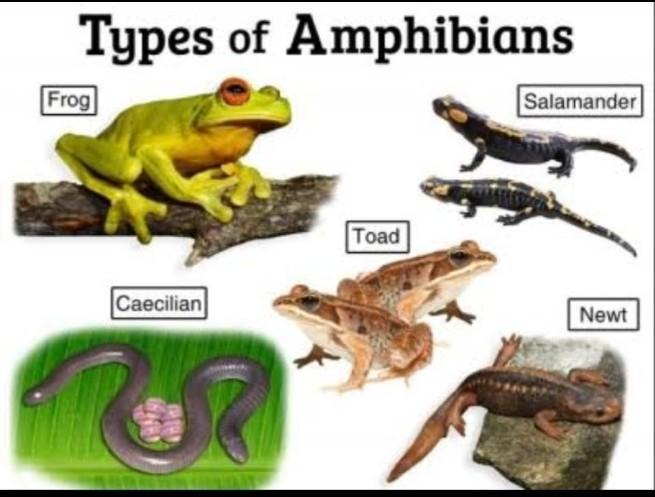
E. Class Reptilia: This class includes organisms having to creep or crawla mode of locomotion. They are generally terrestrial animals with dry, cornified skin, epidermal scales, or scutes covering their bodies. External ear holes are not present. Tympanum stands for the ear. Limbs are two pairs when present. Crocodiles have four chambers in their hearts, which are usually three. Reptiles are Poikilotherms. As skin cast, snakes and lizards shed their scales. Sexes are distinct. Internal fertilisation. They are oviparous and have straight development. Chelone (turtle), Testudo (tortoise), Chameleon (tree lizard), Calotes (garden lizard), Crocodilus (crocodile), and Alligator are just a few examples. Poisonous s.nakes — Naja (Cobra), Bangarus (Krait), Vipera, (Viper) etc. are also known as reptiles.
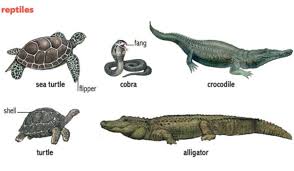
F.Class Aves: The presence of feathers distinguishes Aves (birds), and most of them can fly, except flightless birds (e.g., Ostrich and Emu). They have a beak. The forelimbs have been transformed into wings. Scales cover the hind limbs, which are modified for walking, swimming, and grasping tree branches. Except for the oil gland at the base of the tail, the skin is dry and lacks glands. The long bones are hollow with air spaces, and the endoskeleton is entirely ossified (bony) (pneumatic). The crop and gizzard are extra chambers in the digestive tract of birds. The heart has four chambers in total. They are warm-blooded (homoeothermic) creatures, which means they can keep their body temperature constant. Lungs are used to breathe. Respiration is aided by air sacs attached to the lungs. Sexes are distinct.Internal fertilization is present. They are oviparous and have direct development. Corvus (Crow), Columba (Pigeon), Psittacula (Parrot), Struthio (Ostrich), Pavo (Peacock), Aptenodytes (Penguin), and Neophron (Vulture) are some examples.
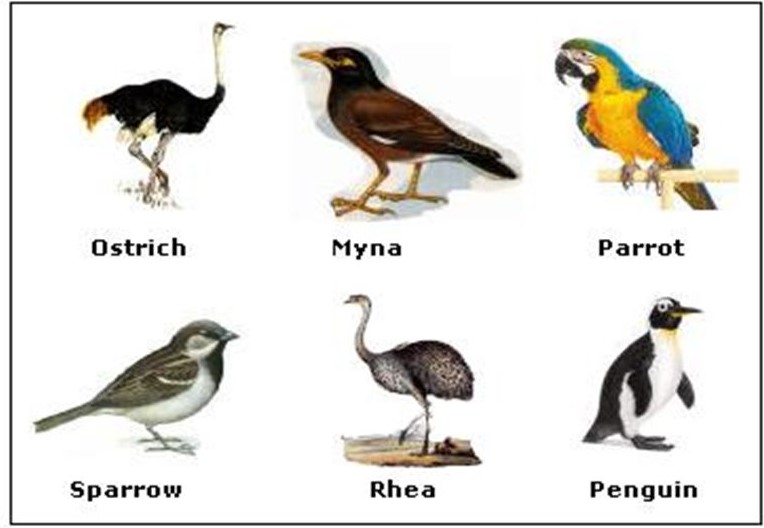
G. Class Mammalia: In the phylum Chordata, Mammalia is the most developed class. Polar ice caps, deserts, mountains, woods, grasslands, and gloomy tunnels are all places where mammals can be found. Some have developed the ability to fly or live in water. The existence of milk-producing glands (mammary glands), which nourish the young, is the most distinguishing mammalian trait. They have two pairs of limbs, one for walking, the other for running, climbing, digging, swimming, and flying. Mammalian skin is remarkable in that it has hair. External pinnae or ears are present. The jaw contains a variety of tooth kinds. The human heart has four chambers. They're the same temperature. Lungs are used to breathe. Sexes are distinct, and fertilization takes place internally.
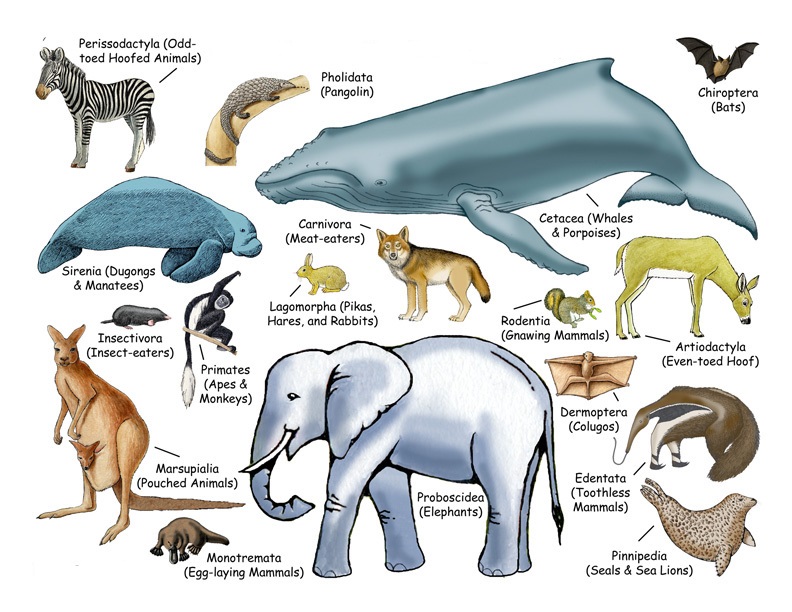
With a few exceptions, they are viviparous and develop directly. Macropus (Kangaroo), Pteropus (Flying fox), Camelus (Camel), Macaca (Monkey), Rattus (Rat), Canis (Dog), Felis (Cat), Elephas (Elephant), Equus (Horse), Delphinus (Common dolphin), Balaenoptera (Blue whale), Panthera tigris (Tiger), Panthera leo (Lion).

 ACME SMART PUBLICATION
ACME SMART PUBLICATION
